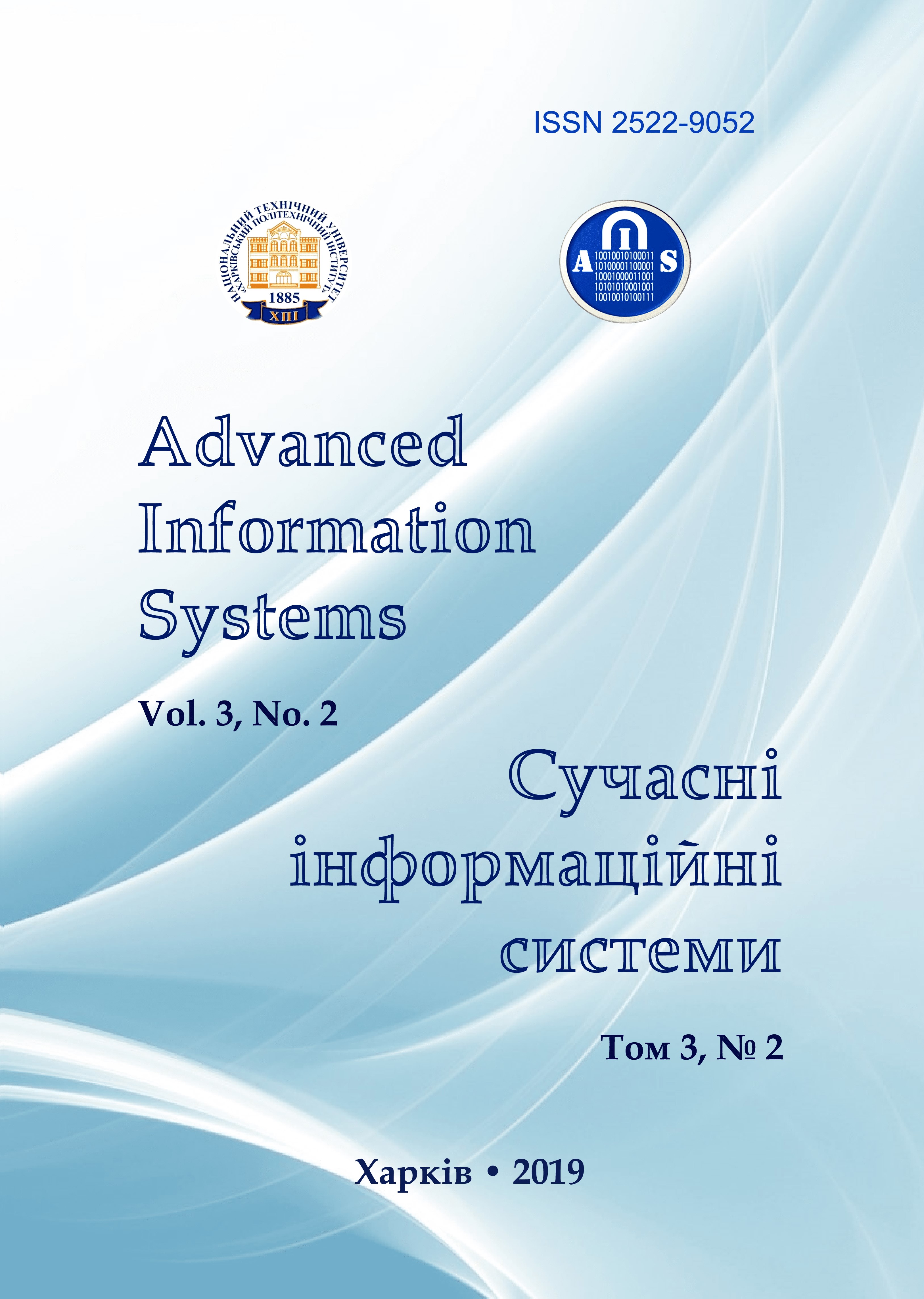FEATURES LOCATIONS HELICOPTER IN COASTAL AREAS
Main Article Content
Abstract
Article Details
References
Karlov, V.D., Nos, A.I. Pichugin, I.M. and Kurtsev, T.M. (2017), “Features of the location of helicopters over the sea, taking into account the main propeller”, Newest technologies - for the protection of air space, sciences. conf. HUPS, April 12-13, 2017, abstracts, Kharkiv, p. 446.
Sadati, N. and Faghihi, A.H. (2006), “Neural Networks in Identification of Helicopters Using Passive Sensors”, IEEE International Conference on Systems, Man and Cybernetics, SMC'06, Taipei, Taiwan, 8-11 Oct. 2006, DOI: https://doi.org/10.1109/ICSMC.2006.384350.
Haghshenas, H. and Nayebi, M.M. (2010), “A novel method to detect rotor blades echo”, IEEE Radar Conference 2010, Washington, DC, USA, 10-14 May 2010, available at: https://ieeexplore.ieee.org/document/5494412/
Tikkinen, J., Hiltunen, K., Martikainen, K. and Isohookana, M. (2012), “Helicopter detection capability of passive coherent location (PCL) radar”, 9th European Radar Conference (EuRAD), 2012, Amsterdam, Netherlands, 31 Oct.-2 Nov. 2012. available at: https://ieeexplore.ieee.org/document/6450717/
Vorobev, E.N. (2018), “Helicopter recognition in DVB-T2 passive bistatic radar”, IEEE Conference of Russian Young Researchers in Electrical and Electronic Engineering (EIConRus), 2018, Moscow, Russia, 29 Jan.-1 Feb.
Tikkinen, J., Hiltunen, K. and Martikainen, K. (2013), Utilization of long coherent integration time in helicopter recognition by passive coherent location radar, Nuremberg, Germany, 9-11 Oct. 2013. available at:
https://ieeexplore.ieee.org/document/668916/.
NDPG (2012), “Acquisition of Next-generation Fighter Aircraft”, Development of the Dynamic Defense Force, pp. 151–157, available at: http://www.mod.go.jp/e/publ/w_paper/pdf/2012/26_Part2_Chapter3_Sec5.pdf
Dimitriadis, G. (2017), Fighter aircraft design: Aerospace Design Project 2017-2018, available at: http://www.ltas-cm3.ulg.ac.be/AERO0023-1/ConceptionAeroFighter.pdf
Strutzinsky O.V., Karlov, V.D., Artemenko, A.M. and Pichugin I.M. (2017), “Optimization of measurement of range to target with its radar within the tropospheric waveguide above the sea”, Control, Navigation and Communication Systems, No. 5 (45), pp. 18–21.
Yermoshin, M.O. and Feday, V.M. (2004), Fighting in the air, HUPS, Kharkiv, 220 p.
Klimov, S.B. (2005), “Role and Place of the Air Forces in the Common System of the Use of the Armed Forces of Ukraine”, Science and Defense, No. 1, pp. 23–26.
Amin Salih M. and Potrus M.Y. (2015), “A Method for Compensation of Tcp Throughput Degrading During Movement Of Mobile Node”, ZANCO Journal of Pure and Applied Sciences, Vol. 27, No 6, pp. 59–68.
Saravana, Balaji B.,, Karthikeyan, N.K. and Raj Kumar, R.S., (2018), “Fuzzy service conceptual ontology system for cloud service recommendation”, Computers & Electrical Engineering, Vol. 69, pp. 435–446, DOI: https://doi.org/10.1016/j.compeleceng.2016.09.013.
Saravana, Balaji B., Mohamed, Uvaze Ahamed, Eswaran C. and Kannan R., (2019), “Prediction-based Lossless Image Compression”, Lecture Notes in Computational Vision and Biomechanics (Springer), Vol. 30, No 1, pp.1749 – 17961, DOI: https://doi.org/10.1007/978-3-030-00665-5_161
Saravanan, S., Hailu, M., Gouse, G.M., Lavanya, M. and Vijaysai, R. (2019), “Optimized Secure Scan Flip Flop to Thwart Side Channel Attack in Crypto-Chip”, International Conference on Advances of Science and Technology, ICAST 2018. Lecture Notes of the Institute for Computer Sciences, Social Informatics and Telecommunications Engineering, vol 274, Springer, Cham, DOI: https://doi.org/10.1007/978-3-030-15357-1_34
Dhivakar, B., Saravanan, S.V., Sivaram, M. and Krishnan R.A. (2012), “Statistical Score Calculation of Information Retrieval Systems using Data Fusion Technique”, Computer Science and Engineering, Vol. 2, Issue 5, pp.43-45, DOI: http://doi.org/10.5923/j.computer.20120205.01
Sivaram, M., Batri, K., Amin Salih, Mohammed and Porkodi V. (2019), “Exploiting the Local Optima in Genetic Algorithm using Tabu Search”, Indian Journal of Science and Technology, Volume 12, Issue 1, DOI: http://doi.org/10.17485/ijst/2019/v12i1/139577
Sivaram, M., Yuvaraj, D., Amin Salih, Mohammed, Porkodi, V. and Manikandan V. (2018), “The Real Problem Through a Selection Making an Algorithm that Minimizes the Computational Complexity”, International Journal of Engineering and Advanced Technology, Vol. 8, iss. 2, 2018, pp. 95-100.
Kovalenko, А. and Kuchuk H. (2018), “Methods for synthesis of informational and technical structures of critical application object’s control system”, Advanced Information Systems, Vol. 2, No. 1, pp. 22–27, DOI: https://doi.org/10.20998/2522-9052.2018.1.04
Sviridov, A., Kovalenko, A. and Kuchuk, H. (2018), “The pass-through capacity redevelopment method of net critical section based on improvement ON/OFF models of traffic”, Advanced Information Systems, Vol. 2, No. 2, pp. 139–144, DOI: https://doi.org/10.20998/2522-9052.2018.2.24
Kuchuk, G., Nechausov, S. and Kharchenko, V. (2015), “Two-stage optimization of resource allocation for hybrid cloud data store”, International Conference on Information and Digital Technologies, Zilina, pp. 266-271, DOI: http://dx.doi.org/10.1109/DT.2015.7222982
Ruban, I., Kuchuk, H. and Kovalenko A. (2017), “Redistribution of base stations load in mobile communication networks”, Innovative technologies and scientific solutions for industries, No 1 (1), P. 75–81, DOI :
https://doi.org/10.30837/2522-9818.2017.1.075
Kuchuk, G., Kovalenko, A., Komari, I.E., Svyrydov, A. and Kharchenko V.. (2019), “Improving big data centers energy efficiency: Traffic based model and method”, Studies in Systems, Decision and Control, vol 171, Kharchenko, V., Kondratenko, Y., Kacprzyk, J. (Eds.), Springer Nature Switzerland AG, pp. 161–183.
Kovalenko, A.A. and Kuchuk, G.А. (2018), “The current state and trends of the development of computer systems of objects of critical application”, Systems of control, navigation and communication, PNTU, Poltava, No. 1 (47), pp. 110–113. DOI : https://doi.org/10.26906/SUNZ.2018.1.110.
Lukashuk, E.V., Petrushenko, N.N., Karlov, V.D., Lukovsky, O.Ya. and Kvitkin, K.P. (2009), “A Model Representation of Tropospheric Radio-Wave Breeders Over the Sea”, Armament and military equipment systems, HUPS, Kharkiv, № 1 (17), pp. 99–102.
Gorodonov, V.P., Drobakha, G.A., Yermoshin, M.O., Smirnov, Ye.B. and Tkachenko, V.I. (2004), Modeling of Combat Action of Air Defense Forces (Air Force) and Information Management of their Control Processes, KhVU, Kharkiv, 409 p.
